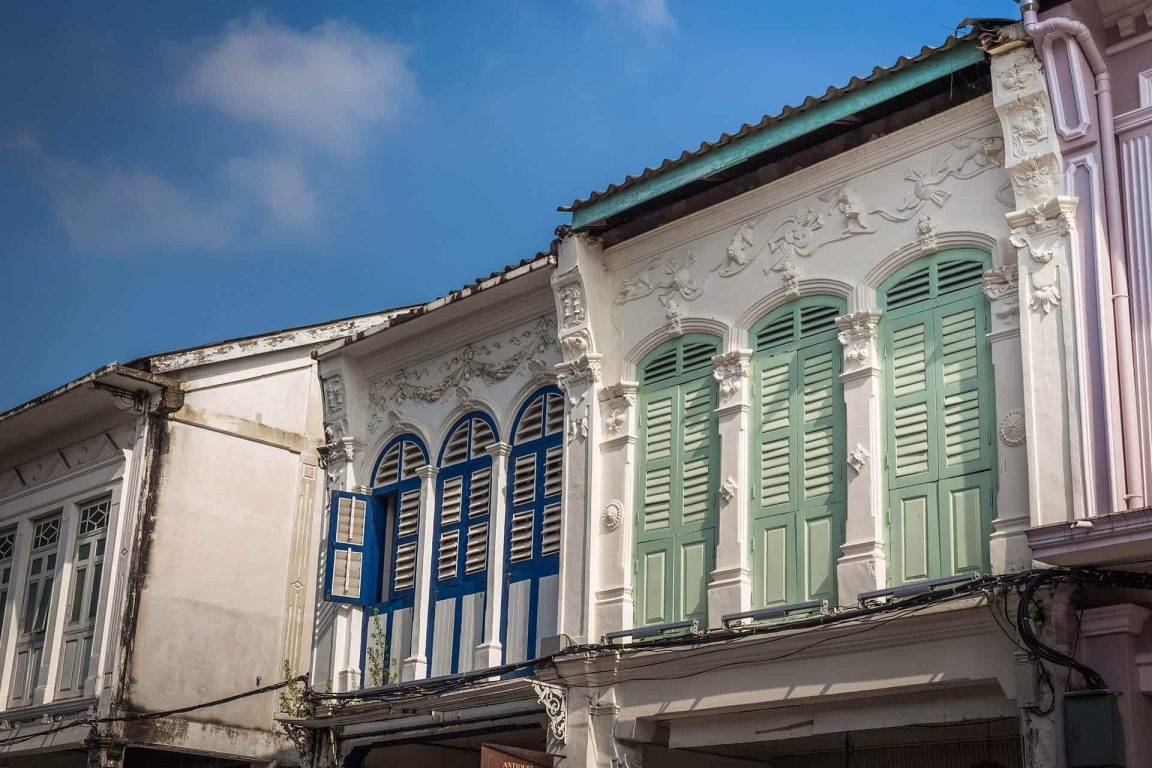Are you looking for a good cloudy day tour in Phuket?
Then look no further than the must do half-day tour of Phuket Town, a self-guided walk through the old part of town around Thalang, Dibuk and Krabi Roads. The beautiful Sino-Portuguese architecture in these timeless enclaves harks back to the charm of a century ago.
As far back as the 18th century Chinese immigrant merchants who got rich from Phuket tin-mining profits naturally also started building homes. Though the very richest commissioned enormous mansions, a number of which survive in Phuket Town today, the vast majority built highly practical terraced shop-houses in the heart of the commercial district. Phuket Town retains many of southern Thailand’s oldest and finest examples, several of which are open to the public.
Some of the best examples of the larger mansions include ‘The House of the Beautiful Images’ on Soi Rommanee, which a café with exhibition space for photography. In addition there is also ‘The Dibuk Grill and Bar’ on Dibuk Road, and ‘The China Inn Café & Restaurant’ on Thalang Road.
Other historical architectural places of interest are Phuket Provincial Hall built at the beginning of the 20th century. This large building is open to the public apart from on special occasions. Then there is also the Phuket Philatelic Museum, located inside an 80-year-old building on Montri Road. This stamp museum looks amazing from the outside and the interior is under development but still open for the public at no entrance fee.
No one knows exactly when the first buildings of Sino-Portuguese origin were constructed, but old photographs from the reign of King Rama V (1853-1910) suggest the design genre was already well established by then.
By the early 20th century the then Phuket Governor invited major European mining companies to construct major public infrastructure such as roads and canals and the architectural evolution soon followed.
Shop house design evolved from a standard prototype favoured by the mixed-race Chinese–Malay (‘Baba’, or ‘Straits Chinese’) immigrants from Melaka and other parts of the Malay Peninsula. It’s a style now widely dubbed Sino-Portuguese because Melakan architecture of the time was itself strongly influenced by the territory’s Portuguese former colonists, though it also incorporates traits from Dutch and Anglo-Indian colonial architecture.
Juxapose this with the uber modern, award winning and nautical-influenced architecture of Kata Rocks and you have a visual treat for eyes. We hope you stay with us and take time to tour historical Phuket Town during your visit.
